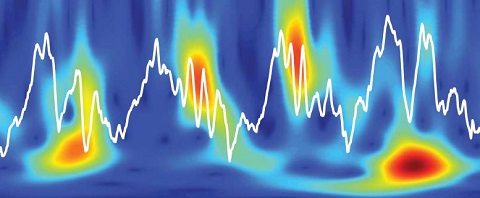Parsing Hippocampal Theta Oscillations by Nested Spectral Components during Spatial Exploration and Memory-Guided Behavior.
Nerve cell activity in a brain region called the hippocampus is organized by rhythmic fluctuations known as theta oscillations, which are thought to support memory. Here, we recorded and analyzed a set of electrical signatures that reflect the activation of particular nerve cell circuits within individual theta cycles. By studying how these signatures varied cycle-by-cycle during memory tasks, we discuss how different nerve cell circuits contribute to learning and memory.
Theta oscillations reflect rhythmic inputs that continuously converge to the hippocampus during exploratory and memory-guided behavior. The theta-nested operations that organize hippocampal spiking could either occur regularly from one cycle to the next or be tuned on a cycle-by-cycle basis. To resolve this, we identified spectral components nested in individual theta cycles recorded from the mouse CA1 hippocampus. Our single-cycle profiling revealed theta spectral components associated with different firing modulations and distinguishable ensembles of principal cells. Moreover, novel co-firing patterns of principal cells in theta cycles nesting mid-gamma oscillations were the most strongly reactivated in subsequent offline sharp-wave/ripple events. Finally, theta-nested spectral components were differentially altered by behavioral stages of a memory task; the 80-Hz mid-gamma component was strengthened during learning, whereas the 22-Hz beta, 35-Hz slow gamma, and 54-Hz mid-gamma components increased during retrieval. We conclude that cycle-to-cycle variability of theta-nested spectral components allows parsing of theta oscillations into transient operating modes with complementary mnemonic roles.

2025. Cell Rep, 44(6):115808.
2022. PLoS Comput Biol, 18(5)e1009816.